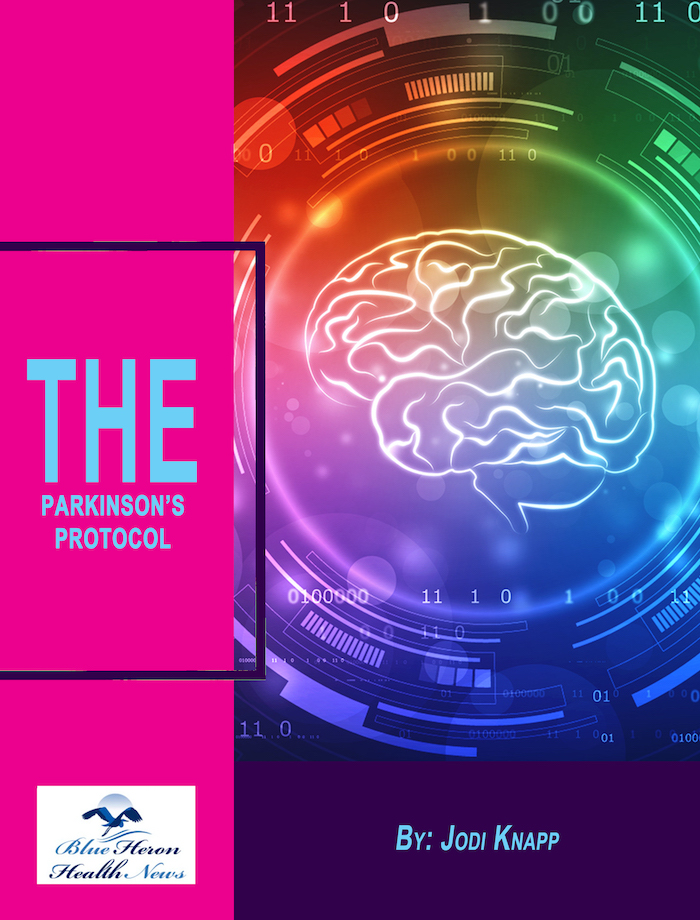
The Parkinson’s Protocol™ By Jodi Knapp Parkinson’s disease cannot be eliminated completely but its symptoms can be reduced, damages can be repaired and its progression can be delayed considerably by using various simple and natural things. In this eBook, a natural program to treat Parkinson’s disease is provided online. it includes 12 easy steps to repair your body and reduce the symptoms of this disease. The creator of this program has divided into four segments to cover a complete plan to treat this disease along with improving your health and life by knowing everything about this health problem. The main focus of this program is on boosting the levels of hormone in your brain by making e a few easy changes in your lifestyle, diet, and thoughts
How does diet influence Parkinson’s disease management?
Diet plays a crucial role in the management of Parkinson’s disease (PD), as it can influence the progression of symptoms, improve quality of life, and help mitigate some of the side effects of treatment. A well-balanced diet tailored to the specific needs of individuals with Parkinson’s disease can support brain health, improve motor function, reduce inflammation, and manage non-motor symptoms like fatigue, constipation, and depression. Here’s how diet influences Parkinson’s disease management:
1. Optimizing Medication Absorption
- Protein and Levodopa Interaction: One of the main treatments for Parkinson’s disease is levodopa, a medication that helps replenish dopamine in the brain. However, high-protein foods (such as meat, eggs, and dairy) can interfere with levodopa absorption. This occurs because amino acids in protein compete with levodopa for absorption in the gut. As a result, it is recommended to balance protein intake throughout the day, taking medications on an empty stomach or a couple of hours after meals to maximize effectiveness.
- Carbohydrates: Some studies suggest that a diet higher in carbohydrates (whole grains, fruits, and vegetables) may help the brain absorb levodopa more effectively, as they can enhance the body’s ability to process the medication.
2. Managing Constipation
- Fiber-Rich Foods: Constipation is a common issue in Parkinson’s disease due to slowed digestive motility. A high-fiber diet can help alleviate constipation by promoting regular bowel movements. Foods like whole grains, fruits, vegetables, legumes, and nuts are excellent sources of fiber.
- Adequate Fluid Intake: It’s also important to stay hydrated. Drinking plenty of water and low-caffeine beverages helps prevent dehydration, which can contribute to constipation.
3. Supporting Brain Health and Cognitive Function
- Antioxidants: Parkinson’s disease is associated with oxidative stress and inflammation in the brain. Foods rich in antioxidants—such as berries, leafy greens, nuts, and seeds—help combat free radical damage and may support brain health.
- Omega-3 Fatty Acids: Diets high in omega-3 fatty acids (found in foods like fatty fish, flaxseeds, chia seeds, and walnuts) are thought to have anti-inflammatory properties and may help protect against neurodegeneration, which is a hallmark of Parkinson’s disease.
- B Vitamins: B vitamins, especially B6, B12, and folate, are important for maintaining neurological health. They help support the nervous system and may reduce the risk of cognitive decline. Foods rich in these vitamins include leafy greens, fortified cereals, eggs, and lean meats.
4. Managing Inflammation
- Anti-Inflammatory Diet: Chronic inflammation is believed to contribute to the progression of Parkinson’s disease. Consuming a diet that is rich in anti-inflammatory foods—such as olive oil, turmeric, ginger, berries, and green tea—may help reduce inflammation and slow the progression of symptoms.
- Avoiding Processed Foods: Diets high in sugars, refined carbohydrates, and processed foods can increase inflammation. Reducing the intake of these foods can help reduce inflammation and manage symptoms.
5. Weight Management
- Maintaining a Healthy Weight: Parkinson’s disease can affect metabolism and lead to unintended weight loss, particularly as the disease progresses. A calorie-dense, nutrient-rich diet can help individuals with Parkinson’s maintain a healthy weight. Foods such as avocados, nuts, and whole grains can provide a good source of energy.
- Maintaining Lean Muscle Mass: Protein intake is important for muscle maintenance. People with Parkinson’s should consume an adequate amount of lean protein from sources like chicken, fish, legumes, and tofu to prevent muscle wasting associated with the disease.
6. Addressing Non-Motor Symptoms
- Depression: Diet can influence mood and may help reduce symptoms of depression, which is common in people with Parkinson’s. Nutrients like omega-3 fatty acids, B vitamins, and vitamin D have been linked to improved mood regulation and may help alleviate depression. Including more fatty fish, leafy greens, and fortified foods may provide these nutrients.
- Sleep Issues: Many individuals with Parkinson’s disease experience sleep disturbances. Certain foods like turkey, cherries, and foods high in magnesium (such as bananas and spinach) may promote relaxation and improve sleep quality.
7. Managing Dysphagia (Difficulty Swallowing)
- As Parkinson’s progresses, individuals may experience difficulty swallowing, a condition known as dysphagia. To manage this, soft, moist foods should be incorporated into the diet, and foods may need to be pureed or thickened to prevent choking. Foods that are easy to chew and swallow—like mashed potatoes, smooth soups, and oatmeal—can help.
- Smaller, More Frequent Meals: Eating smaller, more frequent meals throughout the day can help manage dysphagia, as large meals may be more difficult to swallow and digest.
8. Avoiding Nutrient Deficiencies
- Vitamin D: Many individuals with Parkinson’s disease have low levels of vitamin D, which is essential for bone health and immune function. Foods rich in vitamin D include fatty fish, fortified milk, and egg yolks. Sunlight exposure is also important for vitamin D synthesis.
- Calcium: People with Parkinson’s disease are at increased risk for osteoporosis due to reduced mobility and potential side effects of medications like dopaminergic drugs. A diet rich in calcium from sources like dairy products, tofu, and fortified plant-based milks can help maintain bone health.
9. Caffeine Consumption
- Caffeine may have both positive and negative effects for people with Parkinson’s disease. Some studies suggest that moderate caffeine intake may improve motor symptoms and cognitive function. However, excessive caffeine can interfere with sleep quality and may exacerbate anxiety, so it is important to monitor individual tolerance.
10. Personalization of Diet
- It’s important to note that every individual with Parkinson’s disease is different, and their dietary needs may vary based on their specific symptoms, progression of the disease, and personal preferences. Working with a dietitian or nutritionist who is familiar with Parkinson’s can help tailor a diet that addresses personal health goals, manages symptoms, and complements their treatment plan.
Conclusion
Diet plays a crucial role in managing Parkinson’s disease by optimizing medication absorption, reducing inflammation, supporting brain health, and alleviating common symptoms like constipation and depression. A diet rich in fiber, antioxidants, healthy fats, and vitamins—while managing protein intake—can help improve quality of life and manage the disease more effectively. Since Parkinson’s disease affects each person differently, a personalized dietary approach, guided by healthcare professionals, is the most effective way to use nutrition as a tool for managing symptoms and supporting overall health.

The Parkinson’s Protocol™ By Jodi Knapp Parkinson’s disease cannot be eliminated completely but its symptoms can be reduced, damages can be repaired and its progression can be delayed considerably by using various simple and natural things. In this eBook, a natural program to treat Parkinson’s disease is provided online. it includes 12 easy steps to repair your body and reduce the symptoms of this disease. The creator of this program has divided into four segments to cover a complete plan to treat this disease along with improving your health and life by knowing everything about this health problem. The main focus of this program is on boosting the levels of hormone in your brain by making e a few easy changes in your lifestyle, diet, and thoughts

